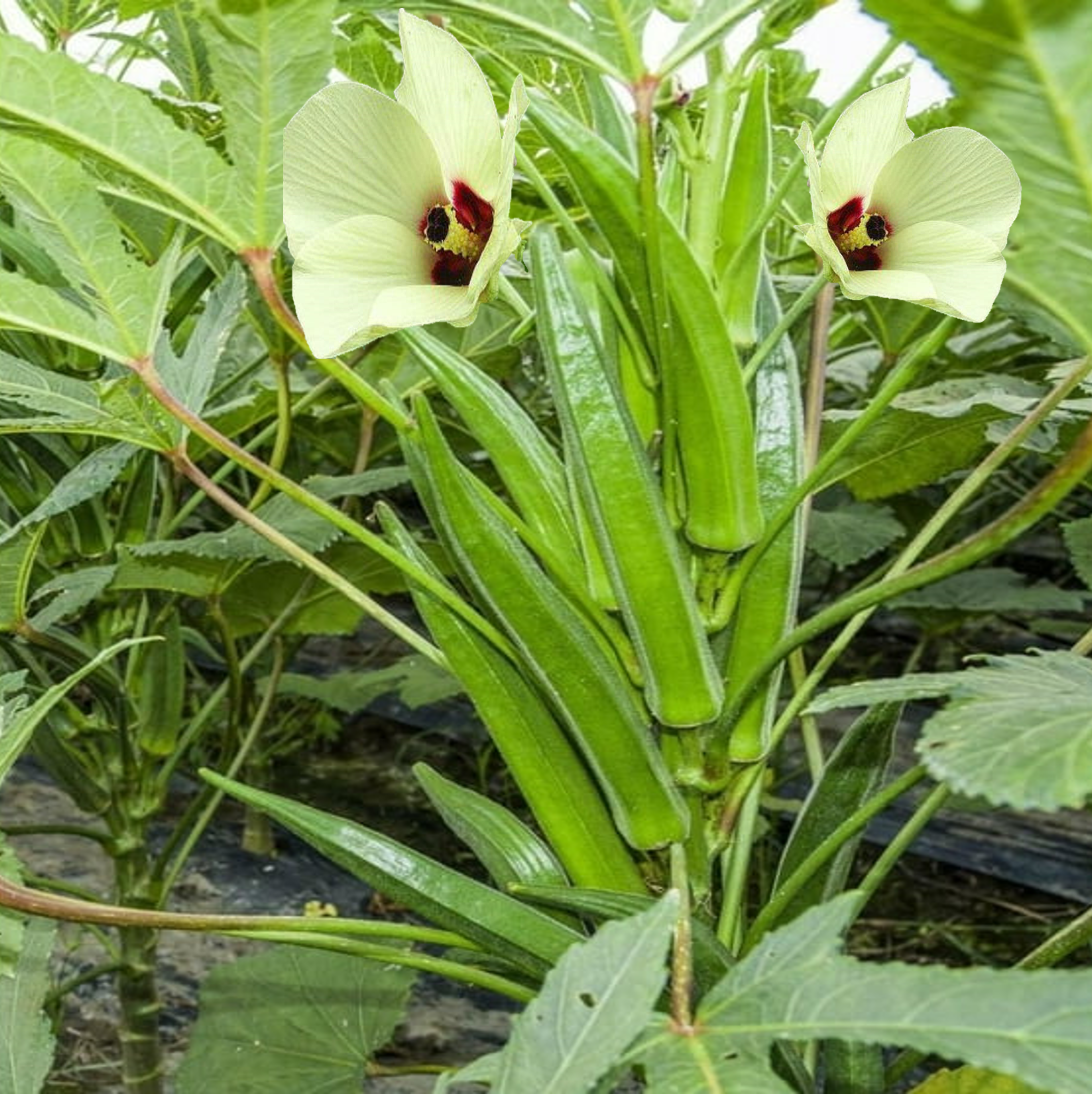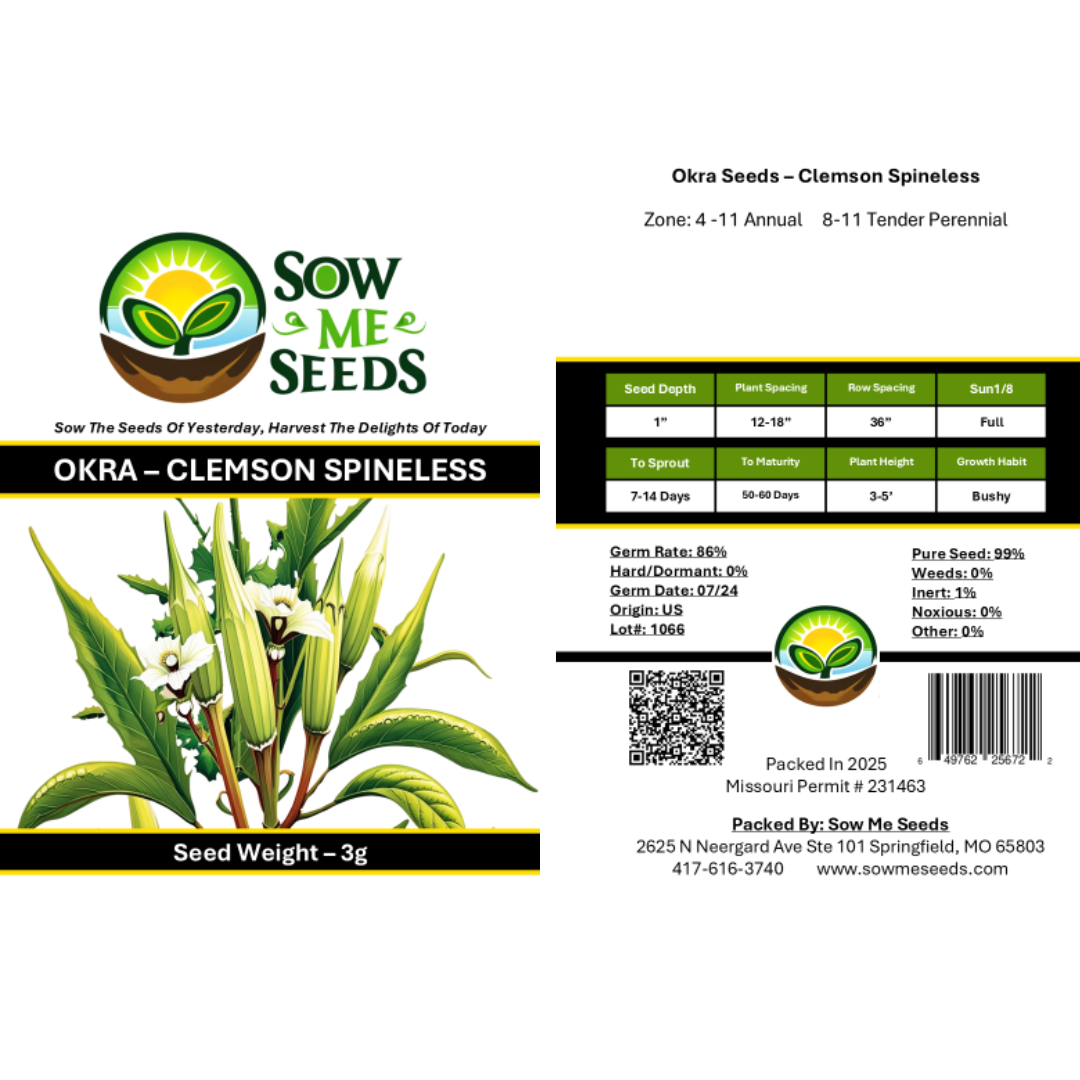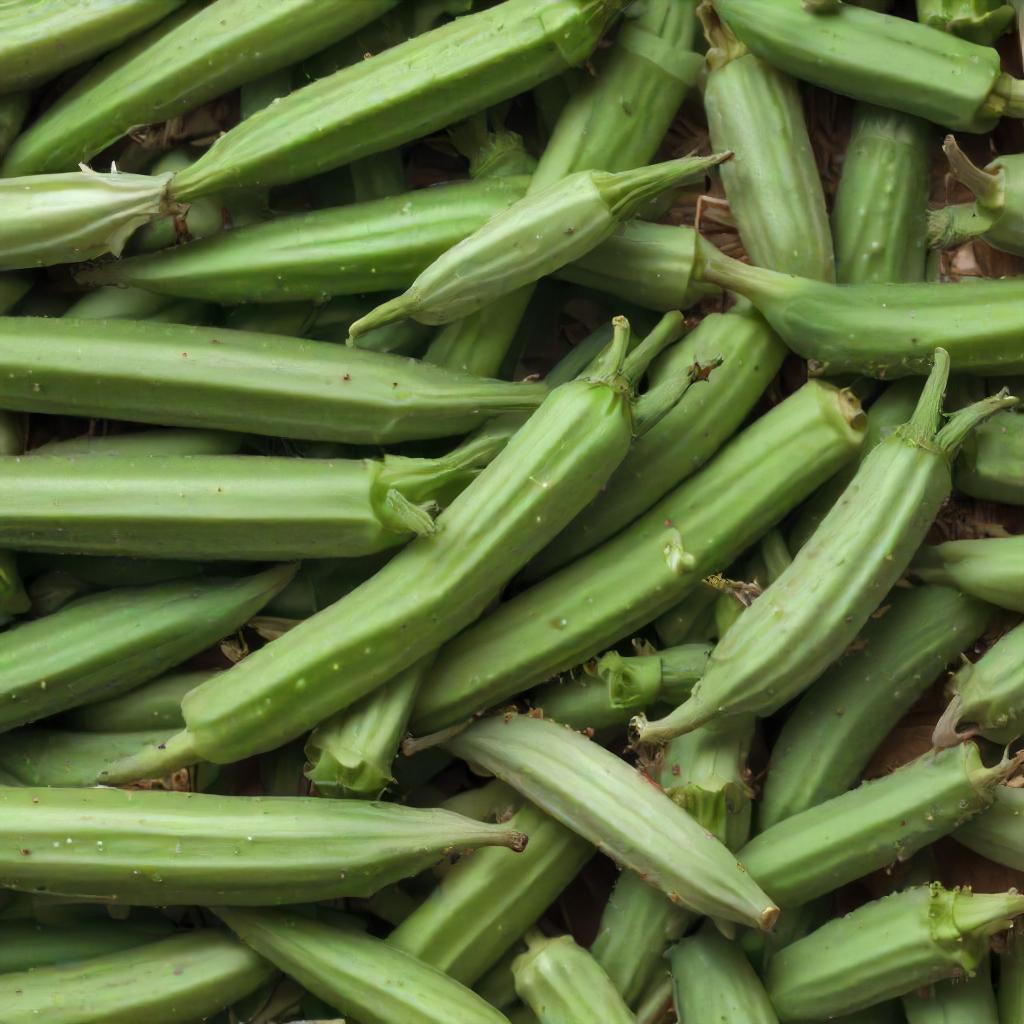- Hardiness Zone: 4-11 Annual
- Hardiness Zone: 8-11 Tender Perennial
Seed Depth: 1/2–1 inch
Seed Spacing: 12–18 inches
Row Spacing: 36–48 inches
Sunlight: Full sun
Days to Sprout: 7–14 days
Days to Maturity: 50–64 days
Growth Habit: Upright, bushy annual
Sunlight: Requires full sun, with at least 6–8 hours of direct sunlight daily.
Soil Type: Prefers well-drained, fertile soil with a pH of 6.0–7.5. Adding compost improves growth.
When to Plant: Sow seeds outdoors after the last frost when soil temperatures reach at least 70°F. In cooler climates, start seeds indoors 4–6 weeks before the last frost.
Direct Sowing: Plant seeds 1/2–1 inch deep, spacing them 12–18 inches apart in rows 36–48 inches apart.
Indoor Sowing: Start seeds in pots and transplant when seedlings are 4–6 inches tall.
Succession Planting: Sow every 3–4 weeks for a continuous harvest during the growing season.
Watering: Water deeply and consistently, keeping the soil evenly moist but not soggy. Mulch around plants to retain moisture.
Fertilizing: Use a balanced fertilizer at planting and mid-season to encourage strong growth and fruit production.
Pruning: Remove any yellowing leaves and harvest pods regularly to promote further flowering.
Pest and Disease Control: Monitor for aphids, flea beetles, and powdery mildew. Use organic pest control methods and ensure proper spacing for airflow.
When to Harvest: Harvest pods when they are 3–4 inches long, tender, and bright green, typically 50–64 days after planting.
How to Harvest: Use scissors or a knife to cut pods from the plant, leaving a short stem attached. Harvest regularly to encourage continuous production.
Seed Collection: Allow some pods to fully mature and dry on the plant. Collect seeds once pods are completely brown and brittle.
Storing Seeds: Store seeds in an airtight container in a cool, dry place.
Why You’ll Love It
Spineless Stems: Nearly spine-free, making harvest much easier and more comfortable.
High Yields: Heavy producer of uniform, tender pods throughout the summer.
Heat Tolerant: Thrives in hot, humid weather — a must-have for southern and summer gardens.
Culinary Staple: Loved for its rich flavor and firm texture in Southern, Cajun, and Creole cooking.
Plant Characteristics
Height: 3–5 feet
Growth Habit: Tall, upright plants with strong stems and deeply lobed leaves
Pod Type: Ribbed, bright green pods, 4–6 inches long, best picked young
Days to Maturity: 55–65 days
Hardiness: Warm-season annual
Flavor and Culinary Uses
Flavor: Mild, slightly grassy, and earthy with a satisfying bite
Culinary Uses: Excellent for frying, pickling, grilling, gumbo, soups, and stews
Companion Planting Tips
Good Companions: Peppers, cucumbers, melons, and basil
Avoid Planting Near: Other tall crops that may shade it, like corn
Bonus Benefit: Attracts pollinators with large yellow blooms and offers vertical interest in the garden
Common Issues and Solutions
Aphids or Flea Beetles: Use neem oil or introduce beneficial insects like ladybugs
Tough Pods: Harvest frequently when pods are 3–4 inches long for best flavor and texture
Slow Germination: Soak seeds overnight before planting and wait for warm soil (above 70°F)
Seeds Per Packet
| 3g | Approximately 55 |
| 10g | Approximately 180 |
Why You’ll Love It
Spineless Stems: Nearly spine-free, making harvest much easier and more comfortable.
High Yields: Heavy producer of uniform, tender pods throughout the summer.
Heat Tolerant: Thrives in hot, humid weather — a must-have for southern and summer gardens.
Culinary Staple: Loved for its rich flavor and firm texture in Southern, Cajun, and Creole cooking.
Plant Characteristics
Height: 3–5 feet
Growth Habit: Tall, upright plants with strong stems and deeply lobed leaves
Pod Type: Ribbed, bright green pods, 4–6 inches long, best picked young
Days to Maturity: 55–65 days
Hardiness: Warm-season annual
Flavor and Culinary Uses
Flavor: Mild, slightly grassy, and earthy with a satisfying bite
Culinary Uses: Excellent for frying, pickling, grilling, gumbo, soups, and stews
Companion Planting Tips
Good Companions: Peppers, cucumbers, melons, and basil
Avoid Planting Near: Other tall crops that may shade it, like corn
Bonus Benefit: Attracts pollinators with large yellow blooms and offers vertical interest in the garden
Common Issues and Solutions
Aphids or Flea Beetles: Use neem oil or introduce beneficial insects like ladybugs
Tough Pods: Harvest frequently when pods are 3–4 inches long for best flavor and texture
Slow Germination: Soak seeds overnight before planting and wait for warm soil (above 70°F)
Seeds Per Packet
| 3g | Approximately 55 |
| 10g | Approximately 180 |





Share and get 15% off!
Simply share this product on one of the following social networks and you will unlock 15% off!